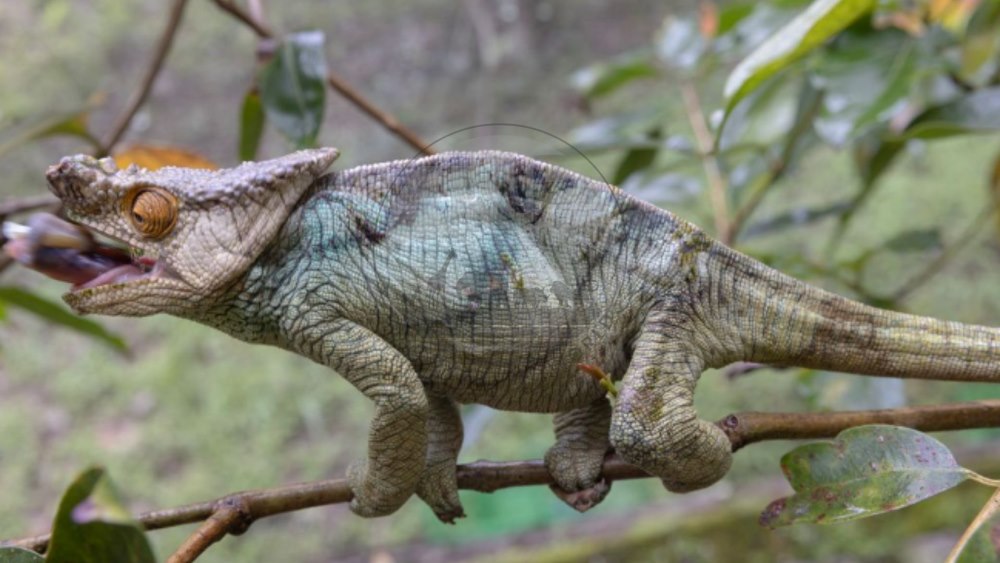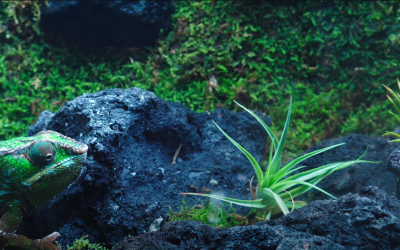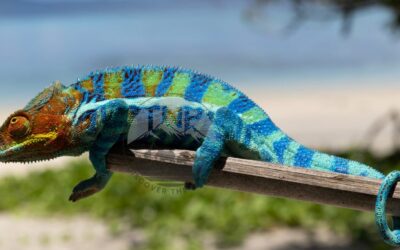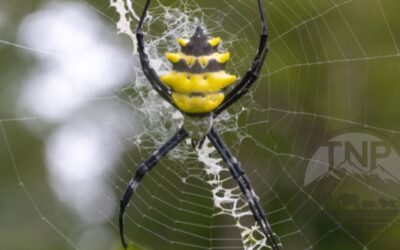Chameleon Feeding Tips: How Often Should You Feed Your Chameleon?
One of the most common questions that new pet chameleon owners have is how often a chameleon eats. Chameleons are fascinating animals that make excellent pets for those who enjoy watching them change colors and hunt for prey. However, caring for a chameleon can be challenging.
The answer to the question is influenced by several variables, including the chameleon’s age, species, amount of activity, and the size of the insect. In this blog, we’ll review what food you can offer your Chameleon and how often you should feed it.
Eating Cycle of Chameleons
Chameleons have exceptional and specific feeding behavior. So, How Often Does A Chameleon Eat? They consume meals at varying frequencies depending on age, size, and health.
I have been to Madagascar several times, where I have seen hundreds of different species of chameleons and fallen in love with this creature. So, I decided to pet one. In 2023, I started petting one panther chameleon. I can vouch that the feeding cycle of chameleons is a bit difficult, but once you understand it, you will be a pro!
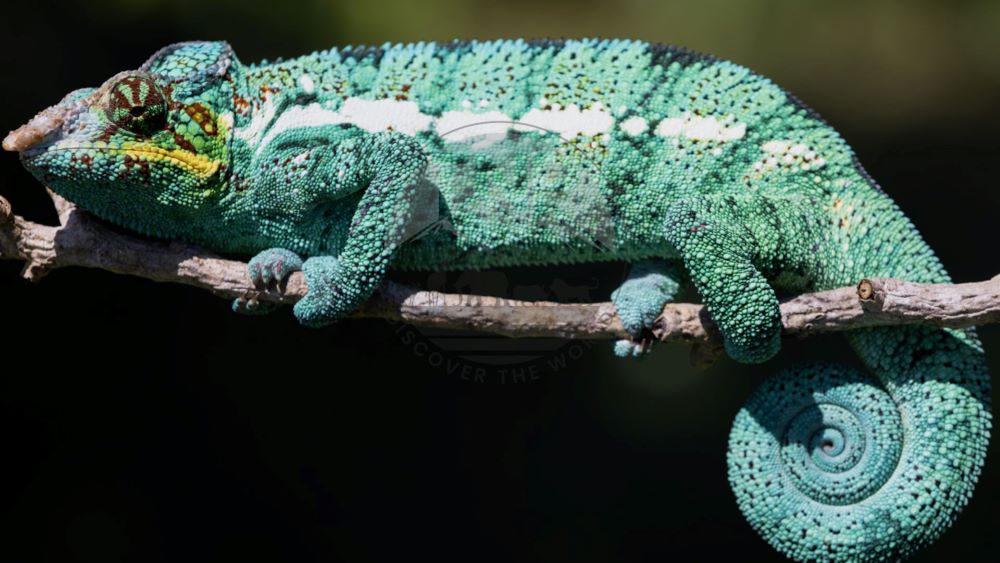
Baby Chameleons: Babies( under 6 months) have an insatiable craving for insects. They should be fed twelve tiny insects daily, divided into two feedings.
Infant Janckson’s Chameleons: However, tiny Dubia roaches and black soldier fly larvae are ideal for infant Jackson’s chameleons. As the chameleons mature, this should be reduced to five or six big bugs every two days.
Juvenile Chameleons: Little Dubia roaches and black soldier fly larvae are essential for infants and are needed every day. However, they’re not the same for juvenile chameleons, who may require insects every other day.
Adult Chameleons: Most adult chameleons have a slower metabolism and can sustain themselves on fewer meals. For this reason, chameleons need not be fed every day.
Zilla Reptile Munchies
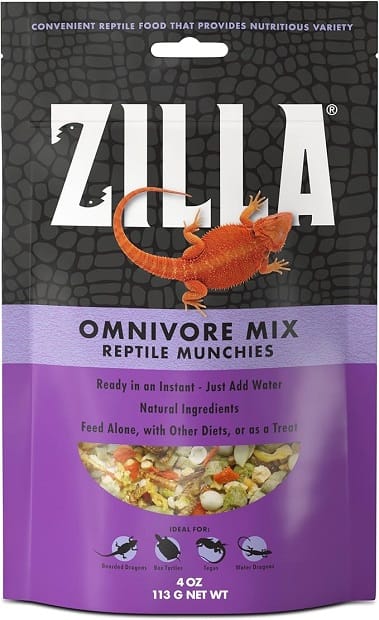
4 Ounces
Reptile Vegetable Fruit Mix
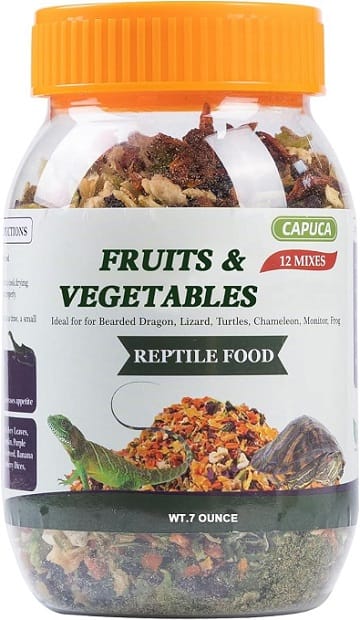
7 Ounces
Reptile Food Dried Mealworms
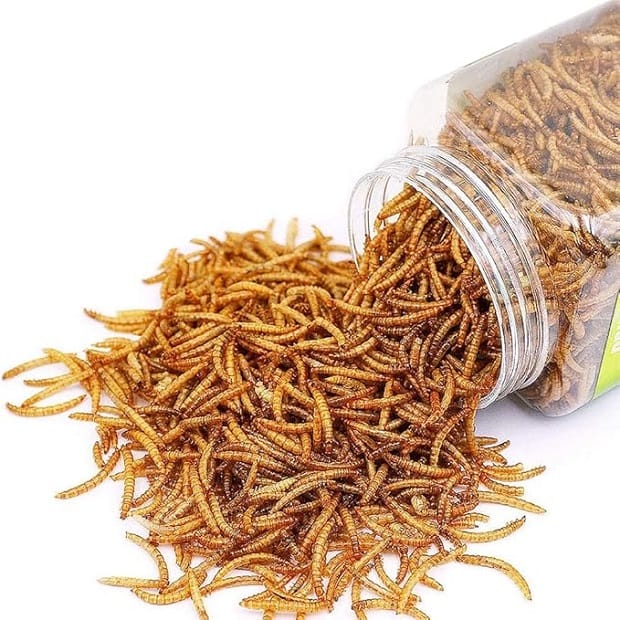
3.5 Ounces
Factors influencing their feeding schedule
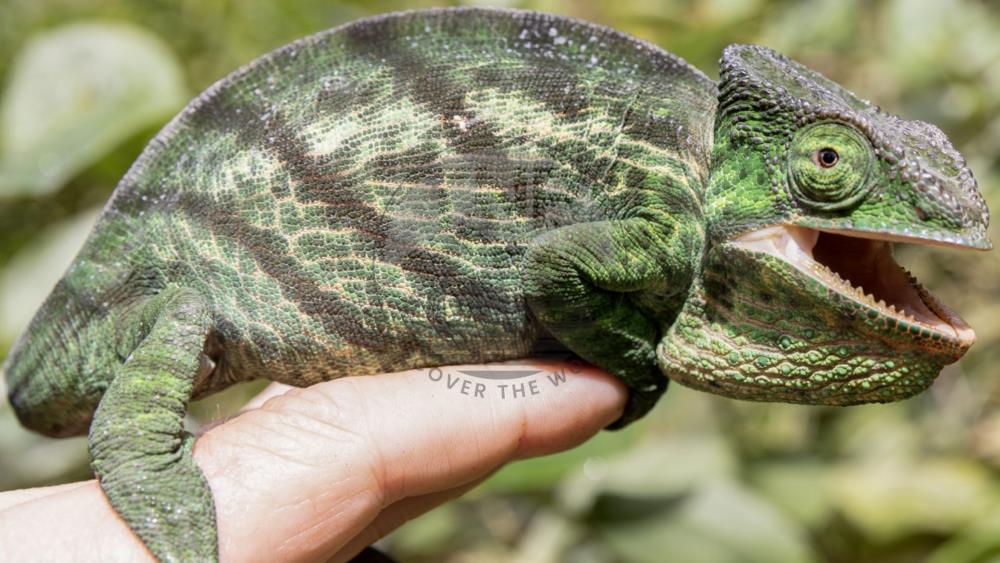
Environmental Condition: Temperature and humidity affect their activity levels and appetite, so environmental conditions play a crucial role here.
Optimal Temperatures: Optimal temperatures are essential for digestion and overall metabolic function.
Metabolism: Also, metabolism is vital in determining how often a chameleon eats to stay healthy.
Availability of Prey: Additionally, prey availability in their habitat impacts their feeding behavior.
Weight and Body Condition: Regularly assessing their weight and body condition is also essential. Offering a range of adequately sized live feeder insects and vitamin and mineral supplements might assist in addressing potential nutritional shortages.
Chameleon Diet: What Chameleons Can Eat and What They Can’t
| Required Nutrients | Source (Name of the food) | Amount |
| Protein | Cricket | Daily (5-8) |
| Calcium | Silkworms | Every 2 days (8-10) |
| Vitamin & Minerals | Phoenix Worms | Occasionally offer 2-3 |
| Hydration | Leaves and flowers | Spray four times in the cage |
Suitable insects and wild creatures for their diet
Chameleons eat a variety of foods, mostly insects and occasionally vegetables. Suitable insects and creatures for their diet include
Crickets, Worms, Cockroaches, Locusts, Indian stick insects, Flies, Slugs, Snails, Caterpillar, Grasshoppers, Cicadas, Small birds & reptiles (for larger chameleon species)

Water Needs of Chameleons
When it comes to water, chameleons do not drink from a pot or dish; instead, they drink from water droplets. For this, various systems can be used, such as Automatic Misting Systems (AMS), Foggers, Plant Drip Systems (PDS), and more.
Plant Dripping System: These systems consist of an artificial leaf arrangement on an artificial plant stem. Using a submerged pump, water is drawn up through a concealed pipe within the stem and drips down the leaves.
Water drips from the leaves, and chameleons drink the drips. Thus, these help them get water very easily.
Automatic Misting Systems: The automatic misting systems excel at wetting the environment to provide drinking opportunities. These systems allow you to program the misting machine to activate and spray water through strategically positioned nozzles within the enclosure.
It creates opportunities for the Chameleons to walk through the damp leaves and drink or lick them for hydration.
Fogger: Last but not least, you can use foggers to mist inside the enclosure. However, it’s important to note that foggers alone are insufficient for hydrating Chameleons. While they assist in maintaining humidity levels, their primary function is not to provide hydration.
Click here and learn more about how you should set up a chameleon’s tank.
REPTIZOO Water Dispenser
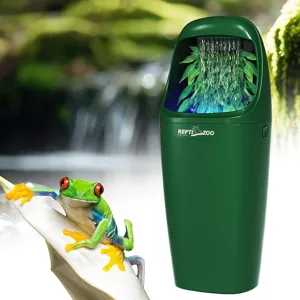
800 ML
Reptile Fogger
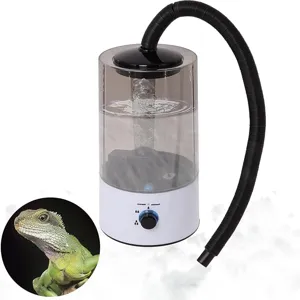
4L Large Size
Reptile Humidifier

3L Large Size
Why certain foods should be avoided
Certain foods can cause different health problems for your beloved chameleon. Some insects like morio, wax, and butter worms are considered treats due to their high-fat content. Feeding these in excess can lead to various health issues. Such as –
- Obesity
- Fatty liver disease
Chameleons should not be exposed to toxic plants or insects. Additionally, feeding only a single insect or vegetation can lead to nutritional deficiencies. The three most common dietary deficiencies are –
- Vitamin A deficiency
- Edema
- Metabolic Bone Disorder (MBD)
So, providing a variety of foods ensures a balanced diet and helps to keep them safe from these health risks.
Dietary Factors for Captive Chameleons
The chameleon’s diversified diet affects how often it eats. Like us, chameleons thrive when they have a diverse menu. To ensure that our pets receive a balanced diet, we must ensure they are provided with a variety of insects and suitable vegetation.
Gut-loading insects with nutritious foods before feeding is one method of achieving this goal. You must also keep an eye on their water needs. As a pet owner, seeing them sip water from leaves and eating dandelion greens is fantastic.
However, aligning their feeding routine with their diurnal nature ensures they have energy during active hours. Proper supplementation with vitamins and minerals is also crucial for their well-being.
Nutritional benefits of insects for chameleon health
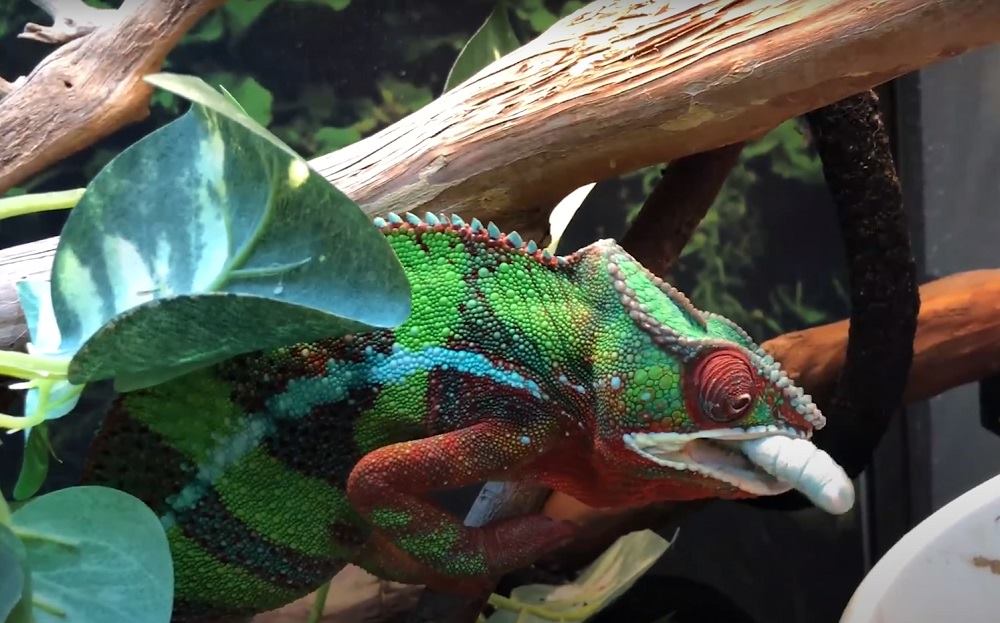
Chameleons’ principal source of nutrition is insects, which are necessary for their growth, development, and overall health. Insects differ in their vital vitamins and minerals, contributing to a well-balanced diet.
Because of their moisture content, some insects can give hydration. For example –
- Silkworms and
- Flies
Insect exoskeletons include nutritional fiber, which promotes chameleon digestion and gut health.
Providing a variety of insects encourages nutritional enrichment, minimizing boredom and increasing consumption.
How to source and offer insects in captivity
| Insects | Source | How to Offer |
| Cricket | Pet Store | Must Be Gut Loaded & Dusted |
| Dubia Roches | Locale Pet Store/ Online Suppliers | Dust them with vitamins and calcium powder supplements. |
| Hornworms | Pet store | Place them on leaves |
| Waxworms | Local suppliers | High in fat so treats only |
Alternatives to Bugs That You Can Feed Your Chameleon
While insects are a primary and natural source of nutrition for chameleons, alternative food items can provide a varied diet. Some of these alternatives include various invertebrates, such as worms.
Larger chameleon species, like the Parson’s chameleon, may include small vertebrates in their diet. Such as-
- Small birds
- Rodents and
- Lizards
However, this is less common and should be done with caution. But you can try this just for a change.
Expert recommendations for a balanced diet
Chameleons require a calcium-to-phosphorus ratio of roughly 2:1 to digest correctly. So, experts recommend feeding chameleons a diversified diet to ensure they get various nutrients.
Also, Rotating staple foods every few weeks keeps the chameleon interested and maintains a healthy nutrient intake.
How Often Does A Chameleon Eat Vegetables and Fruits?
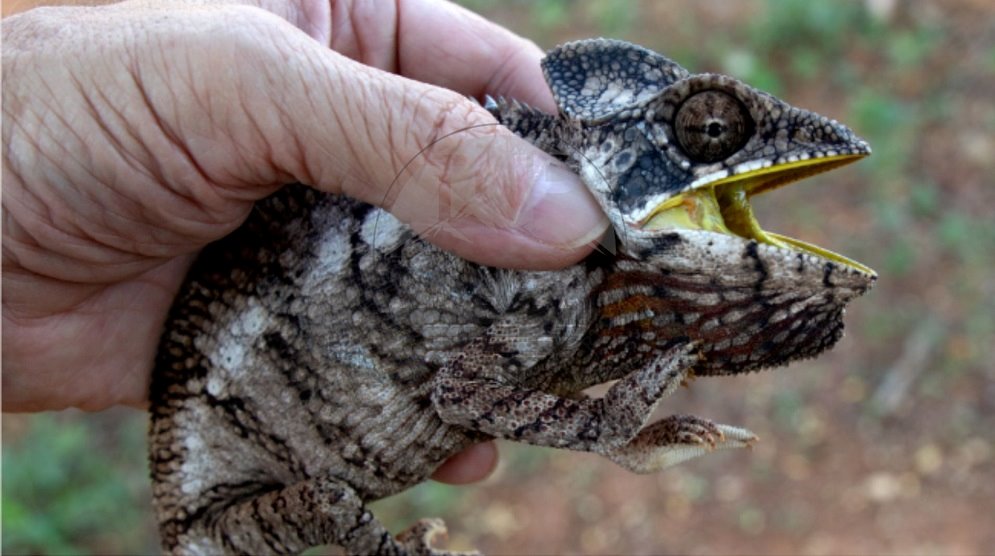
Chameleons don’t often munch on vegetables and fruits. Some species eat vegetables and fruits occasionally. The idea of chameleons consuming vegetables has been a subject of debate. While chameleons are primarily insectivores, some species have been observed occasionally consuming small amounts of vegetables and leafy greens in the wild.
Supplementing a chameleon’s diet with leafy greens and vegetables can provide additional hydration and specific vitamins. However, they should not replace the main nutrition source, insects. Here, we have a short list of vegetables that you can feed your chameleon, and these are –
- Dandelion greens
- Escarole and
- Collard greens
Depending on the species, fruit might also be a part of your Chameleon’s diet. Panther Chameleons will take fruit and vegetables, whereas Veiled Chameleons will not.
Non-vegetarian Food for Chameleons
Certain larger chameleon species have been seen consuming small birds, rodents, and fellow reptiles in their native environment. The pinky mouse is also a topic of debate, as some suggest it could be an occasional monthly indulgence limited to a small size.
Nevertheless, this opportunistic behavior remains outside their typical dietary habits, and chameleon experts commonly advise against introducing non-vegetarian elements to their diet.
Health Issues
Chameleons can experience various irregularities due to health issues, and being attuned to these symptoms is crucial for their well-being. One common sign to watch for is color changes that aren’t aligned with their normal behavior.
Weight Loss
Losing weight is another irregularity that warrants attention, as rapid or noticeable weight loss may indicate illness, malnutrition, or the presence of parasites.
Swelling or Puffiness
Any puffiness or swelling in the limbs, body, or joints could suggest inflammation, infections, or fluid retention.
Unusual Stool
You should also check on the stool. Unusual or irregular stool, including diarrhea, blood, or mucus, can signify gastrointestinal problems or parasitic infections. When encountering these irregularities, it’s essential to seek professional veterinary assistance.
Attempting self-medication or the use of over-the-counter treatments can be risky and potentially exacerbate the condition.
How Often Does A Chameleon Eat FAQs
How does chameleons drink water?
Chameleons can drink water droplets from leaves, but it’s important not to spray water directly on them.
How often should I feed my chameleon?
Chameleons’ feeding frequency can vary. Hatchlings and juveniles might need to eat daily, while sub-adults and adults could be fed every other day or a few times a week. Observing their appetite and overall health helps determine the ideal feeding schedule.
What should I do if my chameleon refuses to eat?
Chameleons may go through periods of reduced appetite due to stress, illness, or shedding. If your chameleon consistently refuses to eat, consult a veterinarian or reptile expert to rule out any underlying health issues.
Do chameleons eat every day?
No, chameleons do not necessarily need to eat every day. Adult chameleons typically eat every other day or less frequently, depending on their size, age, and species. However, baby chameleons or gravid (pregnant) female chameleons usually require more frequent feeding to support their growth and health.
Why do Chameleons go on hunger strike?
It’s difficult to say why they do it, but if you provide more food to your chameleons, they may become obese and go on hunger strikes! Typically, this is due to becoming bored with the meals offered.

